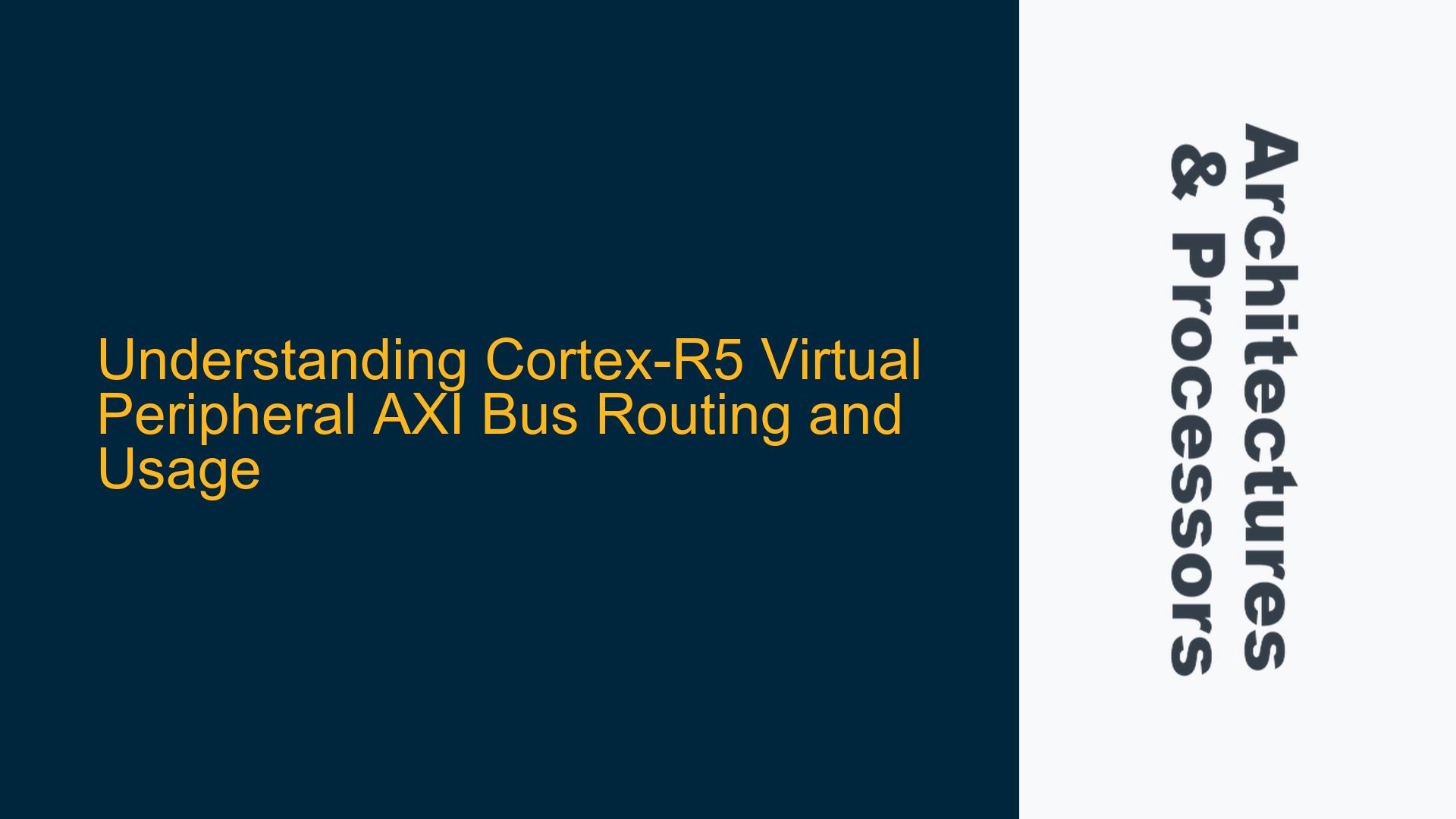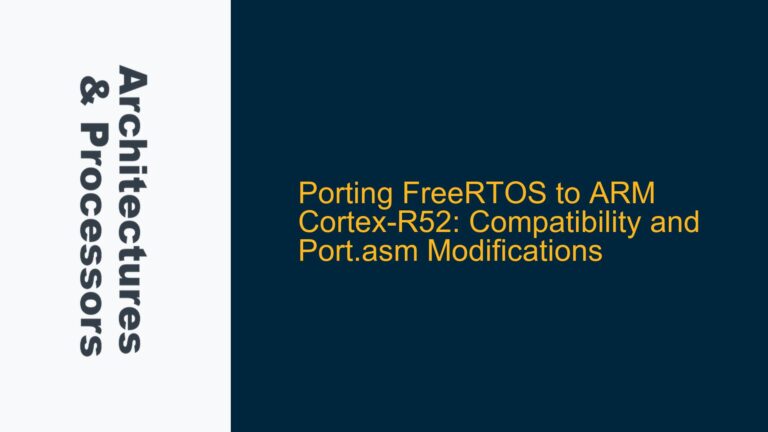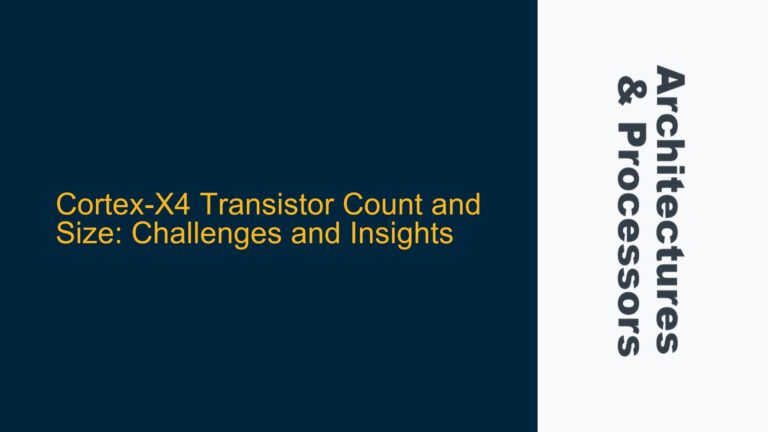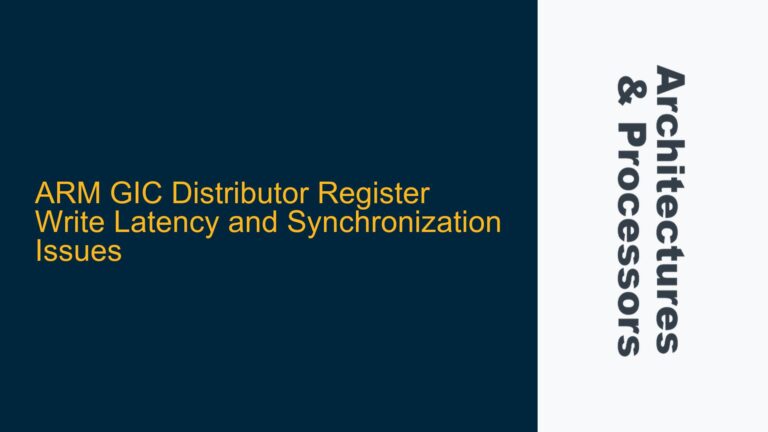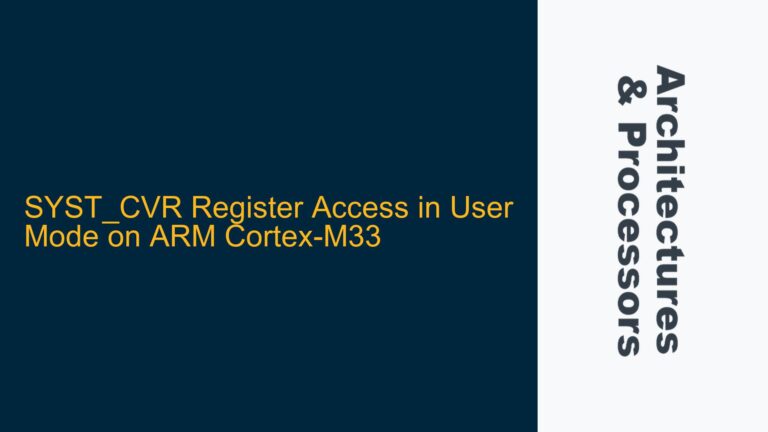Cortex-R5 AXI Peripheral Bus Architecture and Routing Mechanism
The Cortex-R5 processor features a sophisticated AXI (Advanced eXtensible Interface) bus architecture designed to optimize peripheral access and system performance. The AXI peripheral bus is divided into two distinct interfaces: the LLPP (Low Latency Peripheral Port) Normal AXI interface and the LLPP Virtual AXI interface. These interfaces are critical for managing peripheral communications, but their routing mechanisms and usage scenarios are not immediately obvious from the technical reference manual (TRM) alone.
The LLPP Normal AXI interface is typically used for standard peripheral accesses, where latency and ordering are managed in a conventional manner. On the other hand, the LLPP Virtual AXI interface is designed for scenarios requiring virtualized or isolated peripheral access, often in safety-critical or real-time systems. The key distinction lies in the fact that ordering is disconnected between these two interfaces, meaning that transactions on one interface do not affect the ordering of transactions on the other.
The routing of peripheral accesses to either the Normal or Virtual AXI interface is controlled by the Peripheral Interface Region Register (PIRR). The PIRR contains an "En" field that enables or disables the Virtual AXI interface. However, when both interfaces are enabled, the selection mechanism for which interface handles a specific access is not explicitly detailed in the TRM. This ambiguity can lead to confusion, especially when both interfaces share the same base address and size.
To understand the routing mechanism, it is essential to delve into the Cortex-R5’s memory protection and virtualization features. The Cortex-R5 supports a Memory Protection Unit (MPU) that can define regions of memory with specific attributes, including access permissions and cacheability. The MPU can also influence the routing of peripheral accesses by associating specific memory regions with either the Normal or Virtual AXI interface.
Additionally, the Cortex-R5’s virtualization capabilities, such as the Hypervisor mode, can further complicate the routing decision. In Hypervisor mode, the processor can create virtual machines (VMs) that require isolated access to peripherals. In such cases, the Virtual AXI interface is used to ensure that peripheral accesses from different VMs do not interfere with each other. The Hypervisor can configure the PIRR and MPU to route peripheral accesses from specific VMs to the Virtual AXI interface, while other accesses are routed to the Normal AXI interface.
In summary, the routing of peripheral accesses to the Normal or Virtual AXI interface in the Cortex-R5 is influenced by several factors, including the configuration of the PIRR, the MPU, and the processor’s virtualization features. Understanding these mechanisms is crucial for designing systems that leverage the Cortex-R5’s advanced peripheral access capabilities.
Peripheral Interface Region Register Configuration and Virtual AXI Interface Activation
The Peripheral Interface Region Register (PIRR) plays a pivotal role in determining whether the Virtual AXI interface is active and how it routes peripheral accesses. The PIRR contains several fields, but the most relevant for this discussion is the "En" field, which enables or disables the Virtual AXI interface. When the "En" field is set, the Virtual AXI interface is activated, allowing it to handle peripheral accesses according to the configuration defined in the PIRR.
However, the activation of the Virtual AXI interface does not automatically mean that all peripheral accesses will be routed through it. The PIRR also defines the base address and size of the memory region associated with the Virtual AXI interface. If a peripheral access falls within this region, it will be routed through the Virtual AXI interface. If the access falls outside this region, it will be routed through the Normal AXI interface.
The challenge arises when both the Normal and Virtual AXI interfaces are enabled and have overlapping base addresses and sizes. In such cases, the routing mechanism becomes less straightforward. The Cortex-R5’s TRM does not provide explicit details on how the processor decides which interface to use when both are enabled and have overlapping regions. This lack of clarity can lead to unexpected behavior in systems where precise control over peripheral access routing is required.
One possible explanation is that the Cortex-R5 uses a priority-based mechanism to determine which interface handles a peripheral access. For example, if both interfaces are enabled and have overlapping regions, the Virtual AXI interface might take precedence over the Normal AXI interface. This would ensure that any access falling within the Virtual AXI region is routed through the Virtual AXI interface, even if it also falls within the Normal AXI region.
Another possibility is that the Cortex-R5 uses the MPU to further refine the routing decision. The MPU can define regions of memory with specific attributes, including access permissions and cacheability. If the MPU is configured to associate a specific memory region with the Virtual AXI interface, any access to that region will be routed through the Virtual AXI interface, regardless of the PIRR configuration.
In systems where both the Normal and Virtual AXI interfaces are enabled, it is crucial to carefully configure the PIRR and MPU to ensure that peripheral accesses are routed as intended. This may involve defining non-overlapping regions for the Normal and Virtual AXI interfaces or using the MPU to enforce specific routing rules.
Implementing Effective Peripheral Access Routing in Cortex-R5 Systems
To effectively manage peripheral access routing in Cortex-R5 systems, designers must take a systematic approach to configuring the PIRR, MPU, and other related features. The following steps outline a comprehensive strategy for ensuring that peripheral accesses are routed through the appropriate AXI interface:
First, designers should carefully define the memory regions associated with the Normal and Virtual AXI interfaces. This involves setting the base address and size fields in the PIRR to ensure that the regions do not overlap unless absolutely necessary. If overlapping regions are required, designers should use the MPU to define specific attributes for each region, ensuring that accesses are routed correctly.
Second, designers should configure the MPU to enforce access permissions and cacheability rules for each memory region. This includes setting the appropriate attributes for regions associated with the Normal and Virtual AXI interfaces. By doing so, designers can ensure that peripheral accesses are routed according to the system’s requirements, even in complex scenarios involving overlapping regions.
Third, designers should consider the impact of virtualization on peripheral access routing. In systems that use the Cortex-R5’s Hypervisor mode, the Hypervisor must configure the PIRR and MPU to ensure that peripheral accesses from different virtual machines (VMs) are routed through the appropriate AXI interface. This may involve defining separate memory regions for each VM and using the MPU to enforce isolation between them.
Finally, designers should thoroughly test the system to verify that peripheral accesses are routed as intended. This includes testing both normal and virtualized operation, as well as scenarios involving overlapping memory regions. By systematically configuring and testing the system, designers can ensure that peripheral accesses are routed correctly, minimizing the risk of unexpected behavior.
In conclusion, the Cortex-R5’s AXI peripheral bus architecture offers powerful capabilities for managing peripheral accesses, but it requires careful configuration to ensure that accesses are routed correctly. By understanding the role of the PIRR, MPU, and virtualization features, designers can implement effective peripheral access routing strategies that meet the needs of their systems.
